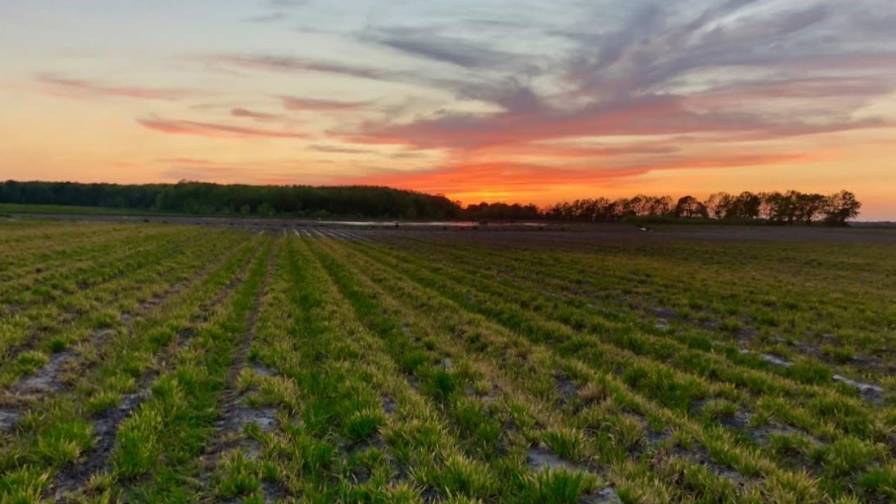Water Optimized Seed Flowing Freely
It cannot be denied. Here in the Land of the Brave and the Free, we consume a ridiculous amount of water. A recent study released by Netherlands-based University of Twente that looked at global water use trends found that the U.S., which comprises only about 5% of the world’s population, is the third-largest consumer of freshwater, after larger and more densely-populated China and India.
It’s not just us though; the same study found that global agriculture now accounts for an astonishing 92% of all freshwater use, with the water-demanding production of row crops such as wheat and corn accounting for 27% of the world’s water footprint.
“We certainly feel that water optimized hybrids fit on every corn acre that’s out there,” says Duane Martin, commercial traits lead, Syngenta, when asked whether water optimized hybrids could be the key to addressing agriculture’s water-use dilemma. “In many areas of the west, there are severe restrictions on irrigation that are driving production costs up, while all areas must improve their return on inputs by growing more with the same inputs or less. There will be a strong drive to adopt this technology.”
Luckily for retailers and their grower customers, North America is the alpha dog when it comes to water optimization in corn, as Martin estimates there are over 25 hybrid and water-optimized trait combos on the market for 2014. “Globally, the U.S. and Canada lead the way in this technology,” he says, “We have more hybrids and trait combinations for water efficiency than any other country.”
Syngenta’s Agrisure Artesian hybrids are set to explode from 450,000 domestic acres planted this past season to over 1.3 million acres in 2014. Syngenta’s main competition in the water-optimized arms race, DuPont Pioneer’s Optimum AQUAmax and Monsanto’s Genuity DroughtGard hybrids, both anticipate expanding market reach as well.
“We now have all necessary approvals for export (of DroughtGard) in place for 2014, and we anticipate an increase both in the number of our products and volume to the marketplace as growers place our products freely across their acreage with the confidence they can deliver the harvested grain to the local elevator,” says Monsanto’s John Fietsam, corn yield optimization product development manager.
Adds DuPont Pioneer senior corn marketing manager Reed Mayberry: “We’re looking to grow our overall footprint in 2014, bringing more Optimum AQUAmax products to market. Last year we were on about 7 million acres, this year it’s looking to be over 10 million acres, or over 10% of the domestic corn market.”
Native Vs. Transgenic
Any deep delve into water-optimized corn has to begin by drawing a distinction between the two different approaches currently on the market. There is the native (or non-GMO) approach, under which DuPont Pioneer’s AQUAmax and Syngenta’s Agrisure Artesian are classified, and there’s the transgenic approach of Monsanto’s Genuity DroughtGard. Both approaches have their relative pros and cons, and all three products claim better yield results than the competition.
DuPont Pioneer’s Optimum AQUAmax, going into its fourth year of commercial availability, competed in 42,000-plus on-farm trials against Monsanto and Syngenta’s products in 2014. According to Mayberry, AQUAmax delivered “rain or shine.”
“With AQUAmax we saw an advantage both in water-limited situations (6.7 bushels yield advantage vs. competition), as well as ideal growing conditions (3.6 bushels yield advantage),” he says.
According to Mayberry, Pioneer’s experience in drought sets its product line apart from competitors. “I like to tell people ‘Pioneer was in drought when drought wasn’t cool,’” he says. “For 55-plus year’s we’ve naturally selected the best native traits from western Nebraska dryland corn, and our Accelerated Yield Technology for gene scanning is another way we are able to increase yields.”
Going forward, Mayberry sees more combinations, or stacks, of Optimum AQUAmax with other traits like above and below ground Bt insecticide traits, as well as increased adoption in irrigated situations. “Putting this product on a pivot is just a great fit,” he says. “As it gets drier, AQUAmax hybrids continue to fill a void for growers.”
Meanwhile, Monsanto’s DroughtGard saw its footprint (via FieldScripts GroundBreakers trials) increase from 250 large scale on-farm trials in 2012 to over 2,000 in 2013.
“Overall the feedback was very positive with better than 80% of those surveyed indicating an interest in planting DroughtGard again,” says Fietsam. “From our 2013 trials we saw about a 5 bu/ac average yield increase.”
Just as Pioneer draws a distinction with its non-transgenic approach, Monsanto favors its own style.
“Our biotech trait enables the plant to better adapt to drought,” says Fietsam. “It’s remarkable how well these hybrids did mining the soil for whatever water was available, Our system conditions the plant to handle water stress Quickly, slowing water uptake into the plant which allows the plants to almost limp along until the next rain fall.”
For 2014, the St. Louis-based biotech giant plans to expand on-farm trials of DroughtGard hybrids further east, into geographies not traditionally known for water-limited growing conditions, as well as continuing research into drought and its many implications in corn production.
“We’ll continue doing research to explore the impact of irrigation deficit timing, as well as drought research in general,” says Fietsam of plans for 2014. “It’s a key area of focus for us – whether we can help growers out west where volumes of water are decreasing — and make their operations more profitable.”
At Syngenta, water optimization boils down to “converting available water to grain more efficiently,” and Duane Martin says that, simply put, Agrisure Artesian does just that.
According to Martin, data from over 4,000 on-farm trials in locations spanning the U.S. and Canada showed an average yield increase of 15% for corn grown under water stress.
“These are elite genetics that will yield at or above other similar hybrids,” he says.
Martin says that 2013 brought the perfect conditions to demonstrate the superiority of Agrisure Artesian. “While drought conditions weren’t as widespread (as in 2012), many parts of the central Corn Belt went sometimes four to five weeks without any rainfall, putting the crops under water stress. With our multiple modes of action, the Artesian technology actually helped the plants grow through those gaps in rainfall.”
Martin also believes Artesian lends itself to denser planting situations better than its competitors. “We believe we can push plant populations a bit higher with Artesian corn hybrids and improve return on non-seed crop inputs.”
For 2014, Syngenta will launch Agrisure Artesian in Europe, as well as in some Middle Eastern and South American countries, and has plans of expanding water-optimized offerings for other row crops in the U.S. and Canada over the next several years, claims Martin.






